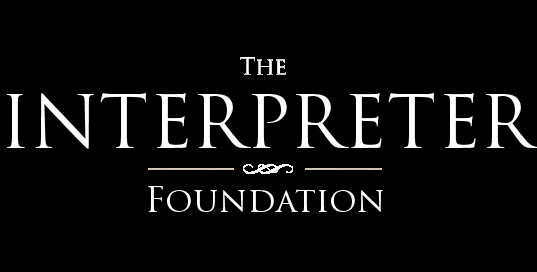A
[biblio collection='nibley' author="nibley, hugh" initial_title="a" sort="title" hide_author="true" hilite-title="true" hide_ancestors="true" show_children="true" sort_children="seq_num" citation_links="true"]
B
[biblio collection='nibley' author="nibley, hugh" initial_title="b" sort="title" hide_author="true" hilite-title="true" hide_ancestors="true" show_children="true" sort_children="seq_num" citation_links="true"]
C
[biblio collection='nibley' author="nibley, hugh" initial_title="c" sort="title" hide_author="true" hilite-title="true" hide_ancestors="true" show_children="true" sort_children="seq_num" citation_links="true"]
D
[biblio collection='nibley' author="nibley, hugh" initial_title="d" sort="title" hide_author="true" hilite-title="true" hide_ancestors="true" show_children="true" sort_children="seq_num" citation_links="true"]
E
[biblio collection='nibley' author="nibley, hugh" initial_title="e" sort="title" hide_author="true" hilite-title="true" hide_ancestors="true" show_children="true" sort_children="seq_num" citation_links="true"]
F
[biblio collection='nibley' author="nibley, hugh" initial_title="f" sort="title" hide_author="true" hilite-title="true" hide_ancestors="true" show_children="true" sort_children="seq_num" citation_links="true"]
G
[biblio collection='nibley' author="nibley, hugh" initial_title="g" sort="title" hide_author="true" hilite-title="true" hide_ancestors="true" show_children="true" sort_children="seq_num" citation_links="true"]
H
[biblio collection='nibley' author="nibley, hugh" initial_title="h" sort="title" hide_author="true" hilite-title="true" hide_ancestors="true" show_children="true" sort_children="seq_num" citation_links="true"]
I
[biblio collection='nibley' author="nibley, hugh" initial_title="i" sort="title" hide_author="true" hilite-title="true" hide_ancestors="true" show_children="true" sort_children="seq_num" citation_links="true"]
J
[biblio collection='nibley' author="nibley, hugh" initial_title="j" sort="title" hide_author="true" hilite-title="true" hide_ancestors="true" show_children="true" sort_children="seq_num" citation_links="true"]
K
[biblio collection='nibley' author="nibley, hugh" initial_title="k" sort="title" hide_author="true" hilite-title="true" hide_ancestors="true" show_children="true" sort_children="seq_num" citation_links="true"]
L
[biblio collection='nibley' author="nibley, hugh" initial_title="l" sort="title" hide_author="true" hilite-title="true" hide_ancestors="true" show_children="true" sort_children="seq_num" citation_links="true"]
M
[biblio collection='nibley' author="nibley, hugh" initial_title="m" sort="title" hide_author="true" hilite-title="true" hide_ancestors="true" show_children="true" sort_children="seq_num" citation_links="true"]
N
[biblio collection='nibley' author="nibley, hugh" initial_title="n" sort="title" hide_author="true" hilite-title="true" hide_ancestors="true" show_children="true" sort_children="seq_num" citation_links="true"]
O
[biblio collection='nibley' author="nibley, hugh" initial_title="o" sort="title" hide_author="true" hilite-title="true" hide_ancestors="true" show_children="true" sort_children="seq_num" citation_links="true"]
P-Q
[biblio collection='nibley' author="nibley, hugh" initial_title="p,q" sort="title" hide_author="true" hilite-title="true" hide_ancestors="true" show_children="true" sort_children="seq_num" citation_links="true"]
R
[biblio collection='nibley' author="nibley, hugh" initial_title="r" sort="title" hide_author="true" hilite-title="true" hide_ancestors="true" show_children="true" sort_children="seq_num" citation_links="true"]
S
[biblio collection='nibley' author="nibley, hugh" initial_title="s" sort="title" hide_author="true" hilite-title="true" hide_ancestors="true" show_children="true" sort_children="seq_num" citation_links="true"]
T
[biblio collection='nibley' author="nibley, hugh" initial_title="t" sort="title" hide_author="true" hilite-title="true" hide_ancestors="true" show_children="true" sort_children="seq_num" citation_links="true"]
U
[biblio collection='nibley' author="nibley, hugh" initial_title="u" sort="title" hide_author="true" hilite-title="true" hide_ancestors="true" show_children="true" sort_children="seq_num" citation_links="true"]
V
[biblio collection='nibley' author="nibley, hugh" initial_title="v" sort="title" hide_author="true" hilite-title="true" hide_ancestors="true" show_children="true" sort_children="seq_num" citation_links="true"]
W-Z
[biblio collection='nibley' author="nibley, hugh" initial_title="w,x,y,z" sort="title" hide_author="true" hilite-title="true" hide_ancestors="true" show_children="true" sort_children="seq_num" citation_links="true"]
0-9
[biblio collection='nibley' author="nibley, hugh" initial_title="0,1,2,3,4,5,6,7,8,9" sort="title" hide_author="true" hilite-title="true" hide_ancestors="true" show_children="true" sort_children="seq_num" citation_links="true"]



